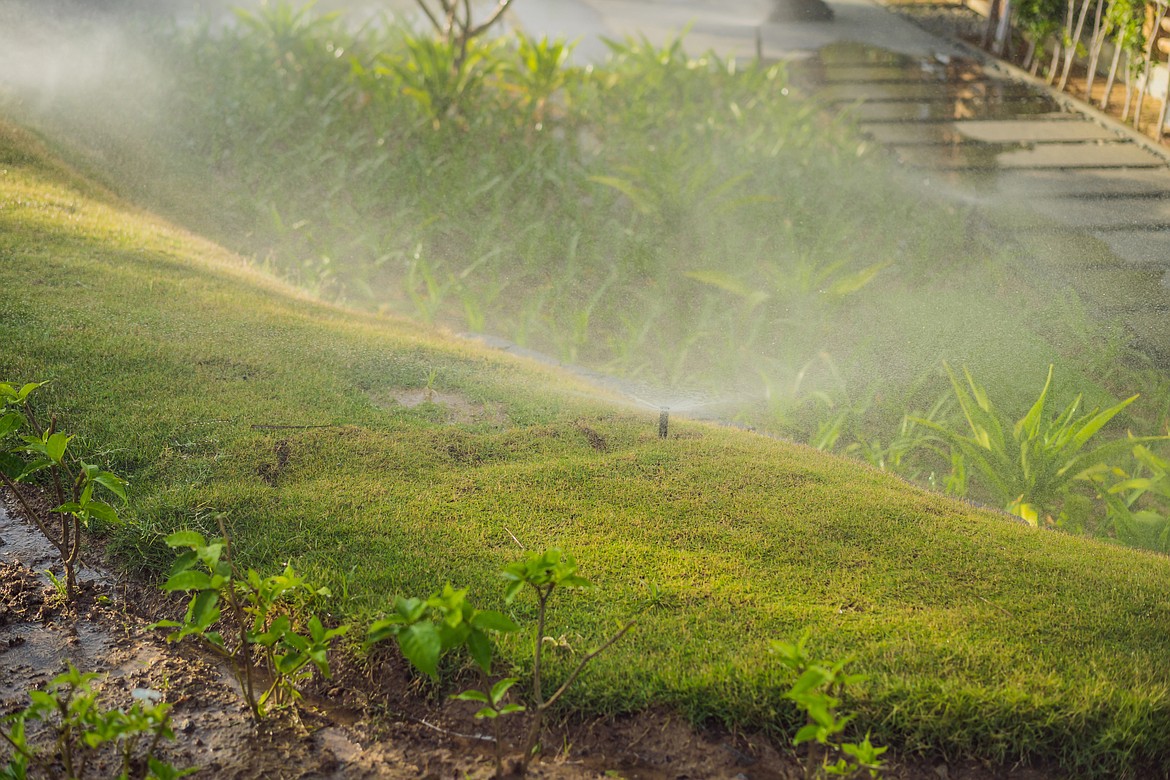Watering tips for gardeners
As the weather warms up, gardeners are thinking about how often to water their yards and gardens. Scheduling, length, and the duration of watering can directly impact our quality of life. Pesticides and fertilizers that can run off in soil and/or leach into the ground water are often the result of common watering practices. By applying sound water management principles, gardeners can produce healthier, higher-yielding plants, help minimize water contamination and runoff, and maximize water infiltration and improve plant uptake.
Tips for responsible irrigation
Water by filling the entire root zone with water and then letting the area dry out before the next application. Avoid frequent light irrigations, since that practice encourages shallow rooting. Continuous watering is discouraged as it tends to weaken plants and often results in other plant stressors. Plant water requirements vary, depending on the weather, soil type, and plant size, age, and species. In the spring (and fall), water less frequently than in the heat of the summer. Consider using drought tolerant or native plants that require minimal water.
Vegetables
Raising vegetables in our dry climate is sometimes a challenge, since plants can dry out quickly. Follow a regular irrigation regimen. Don’t allow seedlings to dry out to the wilting point or they will not recover. If there is a choice, choose drip irrigation over sprinklers. Where water is short, consider using plants that can stand short periods of water stress. Avoid over-irrigation, monitor soil moisture and maintain fertility.
Lawns and landscapes
Lawns in the Columbia Basin may require water every other day in the heat of the summer, depending on the soil type. When temperatures are lower, watering is not needed quite as frequently. Following good soil management practices like regularly aerating, dethatching, soil testing, applying fertilizer and mowing can help improve the lawn’s drought tolerance. Adjust sprinklers to minimize runoff.
Apply plant, plastic, bark, paper or fabric mulches to conserve soil moisture and control weeds. Try not to water lawn and landscape trees at the same time. Trees and shrubs require different methods and watering frequencies from lawns. Also, properly following pesticide and fertilizer labels can help keep the lawn healthier.
Trees and shrubs
Stress in trees and shrubs is often the result of not getting enough water. Young trees and shrubs do not require as much water as mature plants that are more deeply rooted. Water mature trees deeply and infrequently. Watering lawns with trees is not recommended since lawns are shallow rooted while mature trees have deeper roots. Watering deeply will improve tree health and help prevent insect or disease infestations. Irrigating at or just outside the tree dripline helps provide water where most roots are located. Monitor moisture using a probe or shovel; the goal is to get good moisture penetration to a depth of about three feet.
For gardening questions contact the WSU Grant-Adams Master Gardeners at the WSU Grant County Extension office at 754-2011 ext. 4313. Online reference services are available at https://extension.wsu.edu/grant/. From there, go to ga.mgvolunteers@wsu.edu. Sealed samples may be brought for identification to the WSU Extension Office, 1525 E. Wheeler Road, Moses, Monday-Thursday 8-5 PM, by appointment only.



